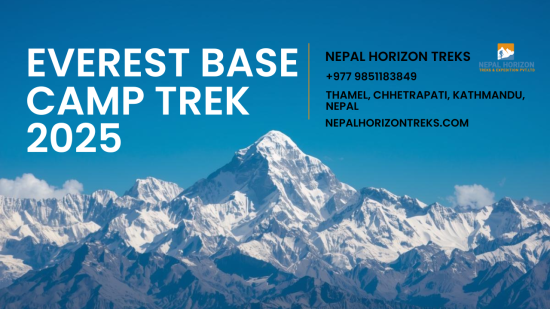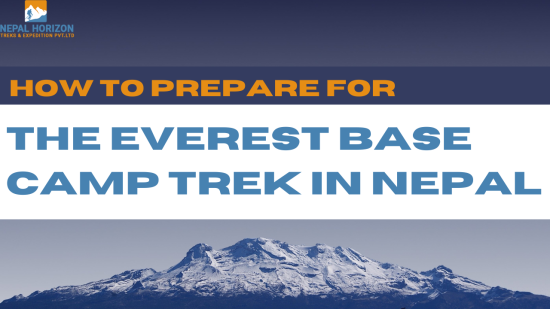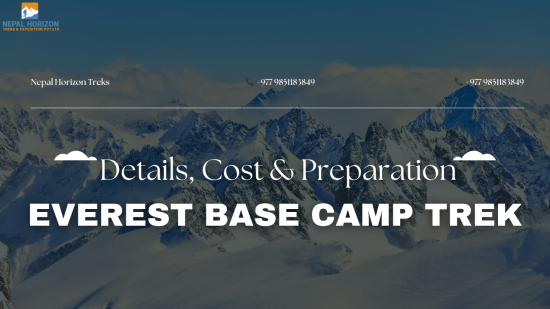A Complete Guideline for Annapurna Base Camp Trek
13th September 2019

Welcome to our guide to Annapurna Base Camp Trek! Here we have tried to provide our visitors with free information and useful advice to help them out get ready for life-long memory in the mountains. For those who are dreaming to travel to trek Annapurna Base Camp for the first time, here the complete guideline derived from our travel experts and guide. Mt. Annapurna (8,091m), the tenth tallest peak in the world, is one of the deadliest mountain to climb with fatality rate of 34 death per 100 safe returns. However, trekking to Annapurna Base Camp is 100% safe and no death trolls are recorded till date.
A Few Facts about Annapurna Base Camp Trek:
- It’s not technical – you don’t need any special skills. It’s long mountain hike at altitude. Extreme altitude, by the end is 4,130m.
- Annapurna Base Camp Trek takes 7 – 14 days, depending on the route you choose. The longer route you choose the better chance of discovery and acclimatization
- Never underestimate the elevation. Some people fail to reach the base camp or fall in on the mountain, due to altitude sickness
- Annapurna Base Camp Trek can be done fully on teahouse mode
- Your kit will be carried by porters and you will carry a daypack – everything else is taken care by the tour operator’s staff
- The total distance from trailhead (Nayapul to Annapurna Base Camp to Nayapul) is 115km
- The difficulty level is rated as moderate mountain trek – much easier compared to Everest Base Camp Trek
Annapurna Base Camp Trek Itinerary – 12 Days
Day 01: Arrival in Kathmandu, Tribhuvan International Airport (1,300m/4,264ft) Day 02: Kathmandu: Cultural tours to Buddhist and Hindu Shrines and preparation for the trek Day 03: Flight from Kathmandu to Pokhara (827m/2,700ft) and trek to Ghandruk (1940m/6360ft) – 30 minutes flight, 5 – 6 hours trek Day 04: Ghandruk – Chhomrong (2170m/7120ft) – 5 – 6 hours Day 05: Chhomrong – Bamboo (2310m/7120ft) – 5 – 6 hours Day 06: Bamboo – Deurali (3230m/10,595ft) – 3 – 4 hours Day 07: Deurali – Annapurna Base Camp (4,130m/13,545ft) via Machhapuchhre Base Camp (3,700m/12,135ft) – 5 – 6 hours Day 08: Annapurna Base Camp – Bamboo – 7 – 8 hours Day 09: Bamboo – Jhinu Danda (1760m/5770ft) – 5 – 6 hours Day 10: Jhinu Danda – Nayapul and drive to Pokhara – 6 hours trek/1 hour drive Day 11: Flight or Drive from Pokhara – Kathmandu Day 12: Final Departure
Annapurna Base Camp Trek Difficulty
Trekking to the base camp of world’s 10th tallest peak is definitely not like walking on a park. ABC trek is a semi-mountain trip with lots of ups and downs and twists and turns. The series of ups and downs over rugged terrain and stone steps is not easy but they add adventures to you walk. Here are some factors that determines the difficulty of Annapurna Base Camp Hike:
Altitude
Annapurna Base Camp Trek takes you to the highest altitude of 4,130m at the base camp. Walking a high altitude at remote terrain is not an easy task. With high altitude invites several challenges as well. Stay prepared to challenge the altitude. The weather is not stable and the air level gets thinner as you move to high altitude. You might be the victim of altitude sickness after you gain 2,500m altitude.
Symptoms of altitude Sickness:
- Problem in breathing
- Vomiting
- Light headache
- Stomach ache
- Loss of appetite
- Difficulty in sleeping
- Fatigue
Prevention:
- Walk on slow pace
- Acclimatize your body
- Stay away from alcohol
- Stay hydrated
Cure:
- Diomax
- Descend down as soon as possible
Distance Difficulty:
The total distance of Annapurna Base Camp is about 115km. In general, it takes about 7 – 14 days to conquer the distance. You will cover about 10 – 20 km in a single day walking 6 – 7 hours a day. Walking 6 – 7 hours day on un-forgiven mountain terrain is challenging. Here are few steps that will help you get prepared for this trek:
- Engage in cardio-vascular exercise at least 1 months prior the trek.
- Schedule work-out trainings that focus your legs and backs
- Go for a hike to nearby hill and get used to with the hike and thin atmosphere
Accommodation, Food and Drinks Difficulty
The Annapurna Base Camp Trek is popular teahouse trek in Nepal. This trek will take you to the traditional villages with lovely teahouses in remote Annapurna region. As the trail goes through remote areas, the teahouse will provide you basic facilities. If you are luxury seekers than, this trek will be quite disappointing. Most of the teahouse offers twin-sharing room with shared bathroom. Warm blankets are provided instead of heater, so we suggest you to take sleeping bag for extra warmth and comfort. Hot water showers are available at lower reaches of trail while tepid water on buckets are served at higher elevation. You have to pay extra for hot water shower. You will eat where you stay overnight. The food menu is basic and very much limited. All you get to eat is staple Nepalese food – Daal Bhaat & Tarkari along with some common international cuisine like Dumpling, Noodle Soup, Pasta and Pizaa. Drinks include few hot drinks like tea and coffee. Don’t forget to carry a refillable water bottle. A bottle of water can cost you USD 1 during the trek and even more at higher elevation. Also get some water purification tablets or liquids for health assurance. Always make sure, you eat and drink healthy.
Annapurna Base Camp Trek Best Time
The higher reaches of Annapurna region is known for extremely cold and harsh weather condition. Throughout the year, there are few months when the weather remains somehow stable; making it an ideal time for trekking. Before starting a trek to Annapurna, It is important to what you wish to see during the trek. If you are after the best views and the weather then embark in high season but the trails are full of crowds. During the winter and the rainy season, the Annapurna trekking routes is quite less-crowded and relatively cheap. But you will never get to capture continuous clear views because of inconsistency in weather conditions. Here is a clear snap shot of the season in Annapurna region of Nepal:
Annapurna Base Camp Trek in Spring Season
The month of March to May marks as spring in Nepal. It is second most popular trekking season in entire Nepal. The blooming wild flowers including rhododendron adds extra charm to the trek and mild weather makes comfortable in walking. Early springs tend to be quite cold which makes it great to walk in lower Annapurna region. April is the best time to trek Annapurna. The average daytime temperature at lower elevation is around 10 degree Celsius, while night falls below freezing level. The higher you go the colder it gets. May is warmer with average day temperature of 20 degree Celsius and night gets around 5 degree Celsius. It still gets freezing cold at higher elevation.
Annapurna Base Camp Trek in Summer (Monsoon) Season
The month of July to August marks as monsoon in Nepal. Monsoon season receives heavy rainfall in Nepal and during this time temperatures are high and receives heavy downpours. Usually, the mountain regions are covered with dark clouds and it can rain any time of the trek. But it doesn’t indicate that you cannot enjoy the charm of Himalayas. After rainfall, it weather open-up and the views are clear. Add to this, the dust on the trails sweep away and it gets fresh. But at a same time, the trail gets muddy and there is high potential of landslides and floods in mountain region. Moreover, leeches all over the forested trail are encroaching. Monsoon season is best if you want to avoid the crowd and wish to enjoy the mountain vegetation at its best. Make sure to pack all the necessary rain gears before embarking for the journey.
Annapurna Base Camp Trek in Winter Season
The month of December to February is unbearably cold in high Annapurna region. Normally the daytime temperature can range between 9 – 12 degree Celsius and night can fall to sub-zero temperature. In winter, morning times are full of fogs but afternoon usually remains clear with occasional snowfalls in the upper reaches. Mountains are said to be at its best attire in winter. So with proper gear, you can head out for a journey to Annapurna Base Camp in winter.
Annapurna Base Camp Trek in Autumn Season
September to November marks as fall in Nepal and it is the best season to trek Annapurna Base Camp. The trail is full of trekkers and you have to book accommodation and flights in advance to secure your trip. Normally, post monsoon, the dust are clear and the weather is brilliant with moderate temperature in daytime and slightly cold in nighttime. In this seasons, the mountain views are superbly clear and there is low chances of precipitation.
Recent From Blogs

28th October 2025

25th October 2025

24th October 2025

18th October 2025

14th October 2025

12th October 2025

10th October 2025

7th October 2025






